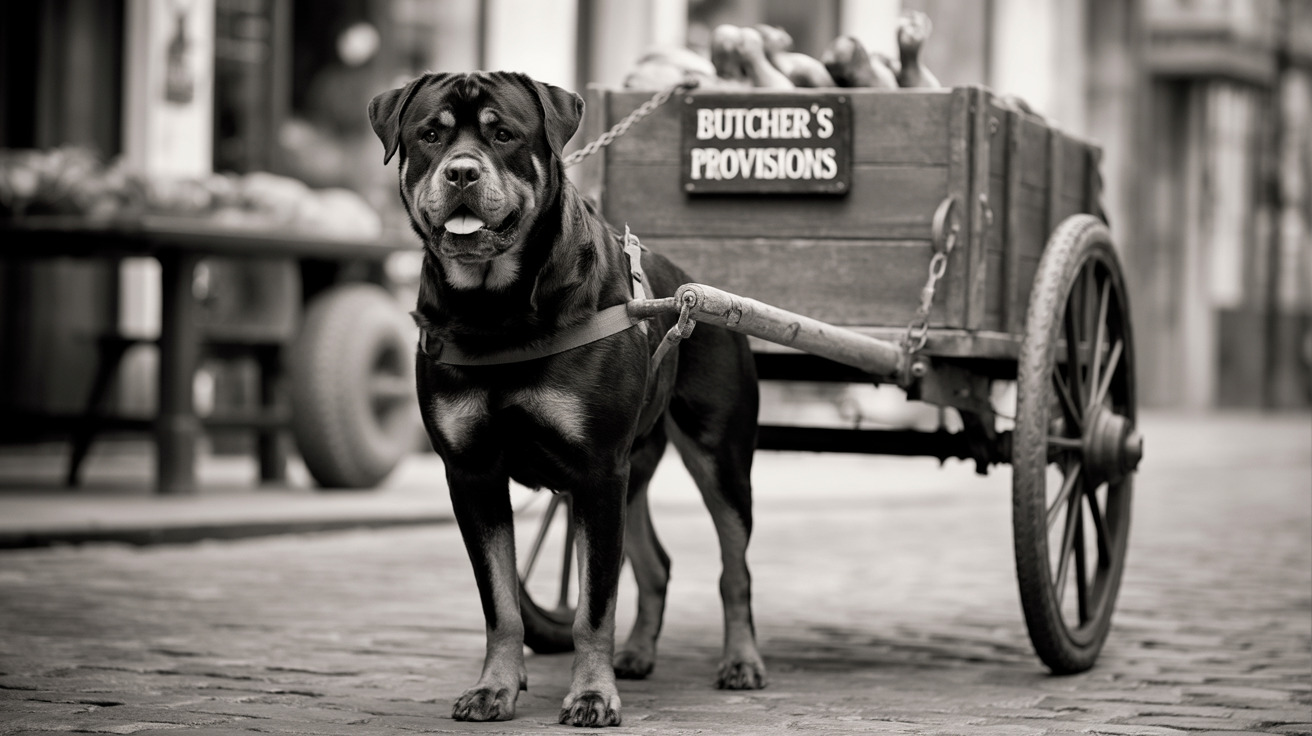The Rottweiler's journey from ancient Roman times to modern-day companion and working dog is a fascinating tale of adaptation and purpose. These powerful, intelligent dogs were originally bred for multiple demanding tasks that shaped their distinctive characteristics and capabilities we see today.
Understanding what Rottweilers were bred for helps explain their natural instincts, temperament, and working abilities that continue to make them valuable partners in various roles. Let's explore their rich history and evolution through the ages.
Ancient Origins and Roman Heritage
Rottweilers trace their lineage back over 2,000 years to the Roman Empire. These dogs descended from ancient Roman drover dogs, specifically mastiff-type breeds that accompanied Roman legions during their conquests across Europe. Their primary purpose was herding and protecting the cattle that fed the advancing armies.
After the Roman Empire's fall, these robust dogs found their home in southern Germany, particularly in the town of Rottweil. This bustling medieval trading center would give the breed its name and help establish its legendary reputation as a working dog.
The Butcher's Dog of Rottweil
In Rottweil, these dogs earned the name "Rottweiler Metzgerhund" (Rottweil Butcher's Dog) due to their close association with the meat trade. They performed multiple crucial tasks:
- Herding cattle from pasture to market
- Protecting livestock from thieves and predators
- Pulling carts loaded with butchered meat
- Guarding butchers' money pouches
Perhaps most famously, butchers would often tie money purses around their Rottweilers' necks, trusting in their protective instincts and intimidating presence to deter thieves.
Evolution into Modern Working Roles
As industrialization reduced the need for cattle driving, Rottweilers successfully transitioned into new working roles. Their intelligence, strength, and loyalty made them ideal candidates for:
- Police and military service
- Search and rescue operations
- Guard and security work
- Therapy and service dog duties
These adaptable dogs proved their worth in both World Wars, serving as messenger dogs, ambulance dogs, and guard dogs.
Characteristics That Reflect Their Heritage
Today's Rottweilers retain many traits that made them successful working dogs:
- Strong protective instincts
- High intelligence and trainability
- Physical strength and endurance
- Calm, confident temperament
- Natural herding abilities
- Strong work ethic
These inherited characteristics make them excellent working partners when properly trained and socialized, though they require experienced handling to reach their full potential.
Modern Applications and Family Life
While many Rottweilers continue their working heritage in various professional capacities, they've also become beloved family companions. Their adaptability allows them to excel in multiple roles:
- Family guardians and protectors
- Competitive dog sports participants
- Therapy and service animals
- Police and military K-9 units
- Search and rescue team members
Frequently Asked Questions
What were Rottweilers originally bred to do in their earliest history?
Rottweilers were originally bred to be drover dogs for the Roman legions, herding and protecting cattle that traveled with the armies as they moved across Europe.
How did Rottweilers' role as herding and guard dogs develop over time?
After settling in Rottweil, Germany, the breed developed into a versatile working dog, combining herding abilities with guard dog duties. They protected livestock, pulled carts, and guarded merchants' property and money.
Why were Rottweilers called the "butcher's dog" of Rottweil?
They earned this name because of their close association with butchers in Rottweil, where they helped drive cattle to market, pull meat-laden carts, and protect the butchers' money during trades.
How have Rottweilers' historical tasks influenced their modern temperament and behavior?
Their working heritage has resulted in dogs with strong protective instincts, high intelligence, trainability, and a calm, confident nature. These traits continue to make them excellent working dogs and family guardians.
What modern working roles do Rottweilers still perform today based on their original breeding?
Today, Rottweilers serve as police K-9s, military working dogs, search and rescue team members, therapy dogs, and service animals, utilizing their inherited working traits in new ways.






